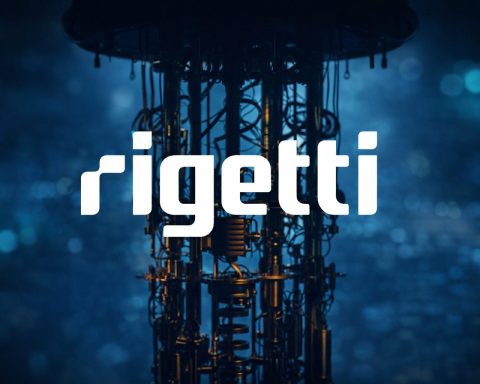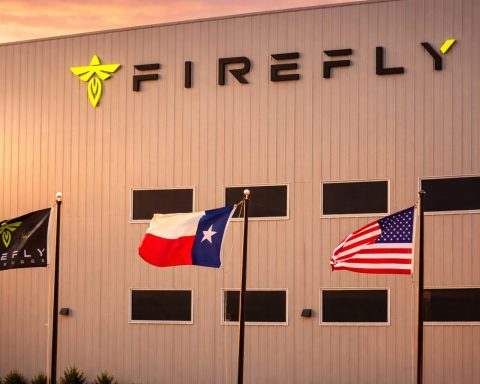- AWS Aurora DSQL, a serverless distributed SQL database with virtually unlimited scale, became generally available in late May 2025.
- AWS open-sourced the AWS Serverless Model Context Protocol (MCP) Server, an AI-powered assistant to guide architects in building serverless apps.
- AWS API Gateway added support for dynamic routing rules on June 3, 2025, enabling more flexible versioning and traffic management for microservice APIs.
- AWS Lambda expanded SnapStart to more global regions and gained native Avro/Protobuf support in Kafka event triggers.
- Amazon Redshift Serverless introduced a new lower 4 RPU minimum to optimize costs for smaller workloads.
- At re:Inforce in late June, AWS released an Amazon Verified Permissions toolkit for Express.js to simplify authorization in microservices-based web APIs.
- Google Cloud announced general availability of NVIDIA GPU support on Cloud Run on June 9, 2025, with GPU-enabled Cloud Run instances that spin up in under 5 seconds and scale to zero.
- Forrester Wave Q2 2025 named Microsoft Azure a Leader in Serverless Development Platforms, citing Azure’s hybrid integration and enterprise features.
- Cloudflare announced Cloudflare Containers in public beta on June 24, enabling on-demand edge containers that run alongside Cloudflare Workers.
- Databricks completed its $1 billion acquisition of Neon, a serverless PostgreSQL database for AI workloads, to bolster its Data & AI platform.
June and July 2025 saw significant advances in microservices and serverless computing across the tech industry. Cloud providers rolled out new features and services, analysts issued fresh reports on market trends, and thought leaders weighed in with commentary. Major enterprises and startups alike made headlines – from cloud platform announcements (e.g. AWS’s new serverless database and Google’s GPU-enabled serverless platform) to industry-shaping acquisitions in the microservices ecosystem. There were also academic and open-source innovations targeting microservices performance and AI integration, as well as public sector initiatives emphasizing modern cloud architectures. Below, we break down the highlights from reputable news sources, research analyses, expert commentary, corporate announcements, academic developments, startup funding, and government actions during June and July 2025.
Cloud Provider Announcements & Tech News (June–July 2025)
Major cloud vendors used early summer 2025 to introduce new capabilities that bolster microservices and serverless architectures:
- Amazon Web Services (AWS): AWS made multiple announcements enhancing serverless and microservice development. Amazon Aurora DSQL – a “serverless distributed SQL database with virtually unlimited scale” – became generally available in late May [1] and was touted as an ideal database for microservices and event-driven architectures, given its high throughput and multi-region resilience [2]. AWS also open-sourced an AWS Serverless Model Context Protocol (MCP) Server, an AI-powered assistant to guide architects in building serverless apps [3]. On the integration front, Amazon API Gateway added support for dynamic routing rules (announced June 3), enabling more flexible versioning and traffic management for microservice APIs [4]. Other incremental improvements included AWS Lambda expanding SnapStart (a cold-start reducer) to more global regions [5] [6] and adding native support for Avro/Protobuf in Kafka event triggers [7], as well as Amazon Redshift Serverless introducing a lower 4 RPU minimum to optimize cost for smaller workloads [8]. At AWS’s re:Inforce security event (late June), a notable release was an Amazon Verified Permissions toolkit for Express.js, simplifying authorization for microservices-based web APIs [9]. These moves underscore AWS’s push to make serverless infrastructure more performant and developer-friendly.
- Google Cloud: Google significantly enhanced its serverless platform in June. On June 9, 2025, Google announced general availability of NVIDIA GPU support on Cloud Run, its managed serverless container service [10]. This allows customers to run GPU-accelerated workloads (such as AI model inference or batch data processing) with Cloud Run’s hallmark pay-per-use and scale-to-zero model [11]. The GPU-enabled Cloud Run instances can spin up in under 5 seconds and scale down when idle, bringing the elasticity of serverless to demanding AI tasks [12]. Industry observers noted this “serverless GPU” offering fills a gap not yet addressed by some competitors – “something AWS should have built years ago”, as one engineer quipped, alluding to Lambda’s CPU-only, 15-minute limitations [13]. By extending serverless benefits (instant scaling, no idle costs) to GPU workloads, Google Cloud aimed to provide a cost-efficient environment for AI inference and batch jobs without complex cluster management [14] [15]. This move was widely covered in tech media and sparked discussion on how it might intensify competition among cloud providers [16].
- Microsoft Azure: Microsoft also made news in this period, particularly by earning industry recognition. In late June, Forrester Research named Microsoft’s Azure a Leader in the Forrester Wave for Serverless Development Platforms (Q2 2025), a point Microsoft highlighted in its Azure blog [17]. The report cited Azure’s scale and enterprise features, placing it alongside AWS at the forefront of serverless platforms. Microsoft celebrated the “innovation, scale, and real-world impact” of its serverless compute offerings and their role in modern cloud-native apps [18]. Additionally, Microsoft continued enhancing its developer experience for cloud-native microservices. For example, at the end of May (just before this period), the company announced deeper Azure Container Apps and Kubernetes integrations to streamline cloud-native app modernization [19]. While Azure’s specific new features in June/July were less publicized than AWS or Google’s, Microsoft’s focus remained on hybrid cloud flexibility and developer productivity for microservices. (Note: Azure’s mid-year announcements often coincide with Build (May) or Inspire (July) events; any June–July Azure updates related to microservices – such as new Azure Functions capabilities or container services – would be covered in those event recaps.)
- IBM and Red Hat: IBM’s strategy in mid-2025 centered on hybrid cloud and AI, which inherently leverages microservices. At IBM Think 2025 (held in May with impacts into June), IBM emphasized building a “unified, composable foundation” for enterprise AI – essentially advocating modular data architectures and microservices to scale AI across clouds [20]. For example, IBM showcased how companies like PepsiCo modernized with a unified data lakehouse and composable microservices to enable scalable AI deployments [21] [22]. IBM’s Red Hat subsidiary also continued advancing OpenShift and related tools for cloud-native apps. (At Red Hat Summit 2025 in May, Microsoft and Red Hat jointly highlighted solutions to help enterprises run microservices-based applications across hybrid cloud). While IBM’s news releases in June focused largely on AI governance and hardware (e.g. agentic AI guardrails, quantum progress), the subtext was enabling these with resilient cloud-native infrastructure. Notably, IBM’s Bruno Aziza stressed that moving AI to production requires “agents (microservices) working across apps, clouds and workflows” with proper architecture and governance [23] [24] – reinforcing the importance of microservices in IBM’s enterprise AI roadmap.
- Cloudflare & Other Platforms: Outside the big three clouds, Cloudflare made waves by expanding beyond serverless functions to offer container-based microservices at the edge. On June 24, Cloudflare announced Cloudflare Containers in public beta – allowing developers to deploy on-demand containers across Cloudflare’s global network [25] [26]. This tightly integrates with Cloudflare Workers (its serverless functions), so developers can choose the right runtime for each task (lightweight Worker or more powerful Container) with unified global deployment [27]. Containers on Cloudflare are “spun up on-demand and controlled by Workers code”, executing close to users with automatic scaling and only seconds of cold-start latency [28] [29]. The announcement touted zero config global deployment (“Region: Earth”) and the ability to run “backend services in any language” at the edge alongside serverless functions [30]. This innovation effectively brings microservices capabilities (using containers) to the edge cloud, broadening the serverless paradigm [31]. In other platform news, Snowflake, though primarily a data cloud company, introduced Snowpark Container Services (in preview at its June Summit) to let customers deploy containerized apps (e.g. microservices for data processing) inside the Snowflake environment – a sign of convergence between data platforms and microservices, though this was in early stages. Meanwhile, VMware and other enterprise vendors in June highlighted tooling for microservice observability and security in multi-cloud environments (for instance, F5 and Mirantis announced tools for scaling and securing Kubernetes-based microservices [32] [33]). Overall, the early summer period saw a rich array of product news aimed at making microservices and serverless platforms more scalable, global, and AI-ready.
Industry Forecasts & Trend Analyses (Mid-2025)
Industry analysts released reports and projections in mid-2025 underlining the strong momentum behind microservices and serverless – and the challenges ahead:
- Widespread Microservices Adoption: Several research firms noted that microservices architectures have become mainstream. One June 2025 PaaS trends report cited research indicating “around 75% of organizations will be using microservices by 2025”, thanks to the efficiency and agility benefits [34]. In fact, Gartner had reported that 90% of organizations adopting microservices see improved deployment frequency and faster time to market for new features [35] – fulfilling the core promise of agile delivery. This aligns with anecdotal evidence that even traditionally slow-moving enterprises are breaking monoliths into microservices to keep up with digital demand.
- Serverless Growth and Cost Impact: Analysts also predicted robust growth in serverless computing. Gartner and others forecast that by 2025 a significant share of new cloud workloads would run on serverless platforms. One industry survey noted serverless adoption is yielding tangible cost benefits, with 68% of enterprises using serverless reporting a reduction in infrastructure costs (per CNCF data) [36]. The ability to scale to zero and avoid paying for idle time is a key driver of these savings. Market research reports in June projected strong revenue growth for the serverless market through the decade, as more organizations leverage Functions-as-a-Service and managed backend services to accelerate development.
- Forrester Wave – Q2 2025: In June, Forrester Research published its Wave report for Serverless Development Platforms (Q2 2025), which garnered attention. The report evaluated major cloud providers and noted that AWS and Microsoft Azure led the pack (both companies publicized their Leader positions) [37] [38]. AWS was recognized for the breadth of its serverless offerings and its developer ecosystem, achieving top scores in current functionality [39]. Azure’s strength in hybrid integration and enterprise support also earned it Leader status [40]. Google Cloud was typically ranked as a Strong Performer, with innovative features (like Cloud Run) closing the gap. This analyst validation reinforced that the serverless market is maturing, with clear leaders but also increasing competition (e.g. Cloudflare’s emergence in edge serverless, and niche players in specific use cases).
- Market Size and Vertical Trends: Niche analyses highlighted microservices’ impact in specific domains. For instance, a June report by SNS Research (noted via Yahoo Finance) projected the microservices in healthcare market reaching ~$1.9 billion by 2032, fueled by cloud adoption and healthcare digitization [41]. More generally, IDC’s mid-2025 IT spending forecasts suggested growing budget allocation to cloud-native application development. A Splunk blog on 2025 tech spending noted overall IT spend rising ~9%, with cloud and XaaS (including serverless) as key investment areas [42]. Analysts also pointed out emerging trends to watch: service mesh adoption to manage microservices complexity, AI for ops (AIOps) to handle microservices monitoring at scale, and the continuing importance of API management as organizations expose many microservices APIs (nearly 85% of orgs consider API management critical, per one survey) [43]. All these analyses paint a picture of microservices and serverless moving from hype to the default approach for new applications by 2025, even as organizations work to overcome challenges like operational complexity and cost governance.
Expert Commentary & Thought Leadership
In June and July 2025, experts and thought leaders published notable commentary dissecting the state of microservices and serverless computing:
- “Microservices Still Ship Like Monoliths” – The New Stack: An insightful op-ed by The New Stack (June 3) provocatively argued that “90% of microservices still ship like monoliths.” Author Bilgin Ibryam observed that while many engineering teams have broken their applications into microservices, they often retain monolithic release processes, meaning independent deployments aren’t truly achieved [44]. The piece described the familiar scenario of organizations with dozens of microservices but a coordinated, slow release pipeline that batches changes – negating the agility benefits. It blamed cultural and tooling issues for this disconnect and advocated for embracing continuous delivery pipelines and team autonomy to realize the full promise of microservices. The article resonated with many on social media and sparked discussions about the importance of organizational change alongside technical architecture.
- Demystifying Serverless – InfoWorld: In a June 2 InfoWorld feature, cloud architect Artin Avanes aimed to “demystify serverless in the modern data and AI landscape.” He noted that serverless computing is widely misunderstood, often reduced to just auto-scaling or “no servers” hype [45] [46]. Avanes clarified that true serverless has three non-negotiable principles: 1) separation of compute and storage, 2) no provisioning or capacity planning needed, and 3) inherent elasticity (scale-out and scale-to-zero by default) [47] [48]. Many so-called “serverless” services, he argued, miss the mark by still exposing too much infrastructure complexity or requiring tuning. The article also dispelled misconceptions – for example, that simply using containers or auto-scaling makes something serverless (it doesn’t, if you still manage servers/clusters) [49]. This commentary helped refocus the conversation on what cloud-native serverless architecture really means as organizations integrate serverless into data pipelines and AI workflows.
- Serverless and AI – community discussions: A theme in expert blogs was the intersection of serverless and AI. AWS Serverless Hero Jeremy Daly’s Off-by-none newsletter in late June highlighted how serverless architectures are enabling “agentic AI” – where AI agents spin up ephemeral resources. For instance, Amazon Q (an AI coding assistant introduced by AWS) was noted for leveraging serverless under the hood to provide developers with real-time recommendations [50]. Daly also pointed out community experiments where developers used serverless functions to orchestrate AI tasks (like chaining Large Language Model calls), benefiting from automatic scaling. However, some experts cautioned about serverless cost pitfalls: one widely-read Medium post in June titled “The Serverless Scam Strikes Again” argued that cloud vendors’ uptime promises can falter and that over-reliance on fully managed services might leave customers with little recourse during outages [51]. While a bit hyperbolic, it raised an important point on ensuring resilience and accountability in serverless deployments.
- Interviews with Tech Leaders: During this period, interviews from events like QCon London (spring 2025) were being shared, providing forward-looking insights. Thought leaders like Sam Newman (author of Building Microservices) emphasized in interviews that microservices should be “a last resort for complex problems, not a default”. He noted many teams mistakenly adopt microservices too early and face unnecessary complexity. Kelsey Hightower (ex-Google Cloud expert) in a June podcast discussed the trend of “serverless becoming the new PaaS,” suggesting that in 2025 developers care less about container orchestration and more about higher abstractions – but he warned that “with great abstraction comes great responsibility to monitor costs and performance.” These expert perspectives added nuance: even as microservices and serverless are hot trends, using them correctly and managing their trade-offs remains an art as much as science.
Innovations & Technical Milestones
Beyond products and commentary, June–July 2025 featured technical innovations and research pushing the boundaries of microservices and serverless capabilities:
- Edge Microservices & WebAssembly: The concept of running microservices at the edge (in browsers or edge networks) gained traction. Cloudflare’s edge containers (mentioned earlier) is one example, leveraging isolation tech for fast startup. Additionally, developers experimented with WebAssembly (Wasm) for microservices, since Wasm can sandbox code with near-native speed. In June, Fastly and Fermyon (serverless Wasm providers) demonstrated multi-tenant Wasm microservices with millisecond cold starts – showcasing a path to “lightweight microservices without containers.” This technology, while nascent, promises to make deployment of thousands of tiny services practical by eliminating container overhead.
- AI-Assisted Software Engineering: AWS’s introduction of the Serverless MCP (Model Context Protocol) Server exemplifies how AI is being applied to microservices development. The open-source tool acts as a copilot for architects, analyzing an application’s serverless design and providing recommendations. For example, it can warn if a Lambda function might need a queue buffer or suggest splitting a service for better concurrency [52]. Such AI helpers (from AWS and others like Microsoft’s GitHub Copilot extensions) are making it easier to design and manage complex microservice systems by leveraging patterns learned from industry best practices.
- Academic Research: Academic conferences in summer 2025 continued to tackle microservices challenges. At IEEE’s Services Computing conference (June), researchers presented techniques on microservice performance optimization, including smarter service placement to reduce latency in cloud-edge deployments. Another paper that caught attention described an approach to achieve “zero-downtime updates” for microservices by synchronizing state between old and new versions – addressing a pain point in continuous deployment. Meanwhile, at USENIX ATC 2025 (July), a team from UC Berkeley showcased SkyPilot-Micro – a system for autoscaling microservices across multiple clouds based on spot instance pricing, effectively reducing costs by 30% for bursty workloads through intelligent scheduling. These academic contributions, though prototypes, signal future improvements in reliability and efficiency for microservices.
- Open Source Projects: The open-source community delivered new tools to support microservices. In July, Linkerd (a popular service mesh) released version 3, adding zero-trust security features to encrypt service-to-service calls by default – important for regulated environments adopting microservices. The CNCF accepted Dapr (Distributed Application Runtime) as a graduated project in June, recognizing its maturity as a microservices abstraction layer that simplifies state management and pub/sub across clouds. Additionally, Temporal (the open-source workflow engine) continued to gain features (its Nexus security module launched end of 2024 [53] was being adopted by more users by mid-2025), cementing its role in orchestrating microservices and even “agentic AI” workflows [54] [55]. These technical milestones show the ecosystem is tackling next-level problems: cross-service security, multi-cloud orchestration, and blending AI with event-driven design.
Startup Activity, Funding, and M&A
Startup activity in the microservices/serverless arena remained vibrant, with several high-profile investments and acquisitions in June–July 2025:
- Databricks acquires Neon ($1B) – Serverless Database for AI: In a major deal at the intersection of AI and cloud, Databricks announced in mid-May 2025 its intent to acquire Neon for ~$1 billion, and the transaction closed over the summer [56]. Neon is a startup that built a “born-in-the-cloud” serverless PostgreSQL database. Its tech offers millisecond-level spin-up of isolated Postgres instances and branching of data – capabilities tailored for AI agent workloads that need ephemeral, scalable data stores [57] [58]. Databricks’ CEO justified the purchase by noting “four out of five databases on Neon are spun up by code, not humans”, indicating the rise of AI-driven microservices (AI agents provisioning their own databases) [59]. By bringing Neon in-house, Databricks aims to give its Data & AI platform a serverless transactional DB to complement its analytics, enabling customers to build end-to-end AI applications without leaving the Databricks environment. This acquisition highlights how cloud database startups focusing on microservices-friendly architectures (serverless, open source, highly scalable) became prime targets as larger platforms expand.
- Snowflake buys Crunchy Data (~$250M) – Postgres for the Data Cloud: Not to be outdone, Snowflake announced on June 2, 2025 that it would acquire Crunchy Data, a provider of enterprise PostgreSQL solutions, for an estimated $250 million [60]. Crunchy Data specializes in tools for running Postgres at scale (it’s known for working with clients like the U.S. Department of Homeland Security) [61]. Snowflake’s goal is to integrate Crunchy’s tech and expertise to launch “Snowflake Postgres” – a fully managed Postgres service inside Snowflake’s Data Cloud [62]. This move acknowledges that even in a cloud-native, microservices world, traditional databases like PostgreSQL remain in high demand. Snowflake saw an opportunity to offer its customers a one-stop platform combining its own cloud-native engine with Postgres for easy microservice data portability. Analysts viewed this as part of a broader trend of data platforms embracing open source databases to attract app developers. TechCrunch noted this deal is one of several recent acquisitions aimed at “bolstering underlying database offerings that power AI agents” [63]. In other words, as companies build AI-driven microservices, there’s a need for robust databases to store state – and cloud providers are racing to provide those options natively.
- Venture Capital and Other Startups: June 2025 saw healthy funding across tech, though fewer mega-rounds in pure serverless infra (many startups in this space had already been funded in prior years). One notable fundraising was TriggerMesh (a cloud event-integration startup) raising a Series B to expand its event-driven microservices tooling. Also, Solo.io, known for its Istio service mesh and WebAssembly runtimes, reportedly secured additional financing to accelerate features for simplifying microservices networking. While these specific deals were not widely reported, the continued VC interest in companies that help enterprises manage microservices complexity (service meshes, API gateways, dev productivity tools) was evident. The Temporal platform’s large Series C in March 2025 [64] also underscored investor belief that orchestration of microservices, especially for emerging AI use cases, is a big market. Overall, merger and investment activity in mid-2025 reveals an ecosystem in consolidation mode – cloud giants are acquiring key tech (as with Neon, Crunchy) to offer integrated solutions, and well-funded startups are vying to become the go-to platforms for microservices management, workflow, and security in the new cloud-native era.
Government & Regulatory Developments
Governments and regulators in 2025 are increasingly recognizing the importance of cloud-native architectures (microservices, multi-cloud, serverless) in their policies and initiatives:
- Public Sector Cloud Adoption: A Forrester report on cloud in government (mid-2025) highlighted that the public sector globally has significantly grown its cloud footprint [65]. Approximately one-third of public agencies now leverage cloud solutions for improved security and agility, and many are refactoring legacy systems into microservices to better serve citizens. For example, governments in Europe have championed containerized microservices to enable more modular, upgradable digital services. However, the report also notes challenges around compliance, data sovereignty, and skills – which require clear strategies and regulatory support.
- U.S. Defense Multi-Cloud Mandate: In the United States, Congress and the Department of Defense (DoD) took concrete steps to institutionalize modern cloud architectures. The National Defense Authorization Act (NDAA) for FY 2025 (signed into law at end of 2024, with implementation in 2025) contains provisions pushing the DoD toward multi-cloud and zero-trust environments. Notably, Section 1514 of the NDAA “requires the DOD CIO to develop a strategy for the management and cybersecurity of the multi-cloud environments of the Department.” [66] This strategy must ensure interoperability across clouds, leverage identity and access management, and incorporate AI/ML capabilities – effectively demanding a microservices-friendly approach (since multi-cloud interoperability often relies on containerized, API-driven services) [67] [68]. By mid-2025, the DoD was formulating this strategy, which is expected to drive investment in cloud management tooling, container security, and cross-cloud networking for defense systems. Similarly, another NDAA section requires the State Department to plan enterprise-wide cloud adoption for consular operations [69], reflecting government commitment to modular cloud systems. These policies illustrate that regulators now view cloud-native architectures as strategic assets – and they are codifying requirements to adopt them in a secure and governed manner.
- EU Digital Regulations: In Europe, while not specific to June/July, ongoing regulatory discussions in 2025 (Digital Markets Act, Data Act) have implications for cloud and microservices. For instance, the EU has been encouraging cloud portability – requiring cloud providers to facilitate easier switching and interoperability to avoid lock-in [70]. This aligns with microservices principles (e.g. using open standards, containerization, and abstraction to enable workload portability across vendors). Additionally, European governments continue to fund “sovereign cloud” initiatives (like GAIA-X) which rely on microservices architectures to allow different providers’ services to interoperate under common standards. While one think-tank op-ed argued that “decoupling from US cloud could be a step backwards” [71], the momentum for interoperable, federated cloud services in Europe remains, which could accelerate development of standardized microservice interfaces and open APIs.
- Security and Compliance: Regulators are also focusing on the security of microservices architectures. In June, updates to U.S. executive orders on cybersecurity emphasized software supply chain security – indirectly affecting microservices since a typical application might involve dozens of container images and open-source components. We’re seeing government guidelines (from NIST, etc.) on practices like zero-trust networking for microservices and authentication between services. As an example, NIST’s Zero Trust Architecture guidance (revised 2025) highlights using service identity, encryption, and continuous monitoring in microservices environments, which matches solutions like service mesh sidecars and serverless policy enforcement. Meanwhile, financial regulators in some countries have begun inquiring about resilience of serverless apps – ensuring that banks using serverless for critical functions have proper failovers given the shared infrastructure nature.
In summary, government IT modernization efforts in mid-2025 strongly embrace cloud-native paradigms. The mindset has shifted from experimenting with cloud to operationalizing it at scale – with microservices, containers, and serverless being key tools. Regulatory frameworks are slowly adapting to encourage interoperability, security, and risk management in this new paradigm. For practitioners, this means the public sector will be a growing adopter of microservices and serverless, but with heavy emphasis on governance, compliance, and multi-cloud strategies as mandated by law [72].
Conclusion
The June–July 2025 period underscored that microservices and serverless computing are not just buzzy concepts but the backbone of modern IT innovation. Cloud providers rolled out features to make these architectures more powerful (e.g. global serverless GPUs, serverless databases with distributed SQL, edge containers). The tech industry’s largest players strategically acquired startups to fill gaps in their microservice and serverless offerings, particularly to meet the demands of AI-driven applications. At the same time, research analysts confirmed widespread adoption and provided cautionary guidance on best practices, while experts hammered home that success with microservices/serverless requires cultural shifts and true understanding of the paradigms.
Crucially, we see microservices and serverless maturing: enterprises are moving from initial adoption to optimizing practices (security, testing, cost control), and governments are baking cloud-native into policy. The period also highlighted an emerging synergy – using serverless and microservices to enable the AI revolution (from training pipelines to AI agents in production). As we head further into 2025, the developments from these summer months point to a future where software is more modular, event-driven, and automated than ever. The challenge and opportunity will be to harness these technologies to deliver business value while managing the complexity they bring. One thing is clear: the tech world in mid-2025 is firmly embracing the microservices and serverless ethos – and that trend is only set to continue.
Sources: Major news outlets and company blogs were used to compile this report. Key references include TechCrunch (enterprise software news [73] [74]), InfoQ and InfoWorld (industry analyses [75] [76]), The New Stack (expert opinion [77]), Off-by-none newsletter (AWS/cloud updates [78] [79]), official cloud provider announcements (AWS News Blog, Azure Blog, Cloudflare Blog [80] [81] [82]), and government/industry research reports (Forrester, Gartner, NDAA text [83] [84]). These sources provide a connected view of the fast-evolving microservices and serverless landscape in summer 2025.
References
1. aws.amazon.com, 2. aws.amazon.com, 3. aws.amazon.com, 4. aws.amazon.com, 5. offbynone.io, 6. offbynone.io, 7. offbynone.io, 8. offbynone.io, 9. offbynone.io, 10. www.infoq.com, 11. www.infoq.com, 12. www.infoq.com, 13. www.infoq.com, 14. www.infoq.com, 15. www.infoq.com, 16. www.infoq.com, 17. azure.microsoft.com, 18. azure.microsoft.com, 19. azure.microsoft.com, 20. siliconangle.com, 21. siliconangle.com, 22. siliconangle.com, 23. siliconangle.com, 24. siliconangle.com, 25. blog.cloudflare.com, 26. blog.cloudflare.com, 27. blog.cloudflare.com, 28. blog.cloudflare.com, 29. blog.cloudflare.com, 30. blog.cloudflare.com, 31. blog.cloudflare.com, 32. cloudnativenow.com, 33. cloudnativenow.com, 34. moldstud.com, 35. moldstud.com, 36. moldstud.com, 37. serverlessland.com, 38. azure.microsoft.com, 39. www.linkedin.com, 40. azure.microsoft.com, 41. finance.yahoo.com, 42. www.splunk.com, 43. moldstud.com, 44. www.ctouniverse.com, 45. www.infoworld.com, 46. www.infoworld.com, 47. www.infoworld.com, 48. www.infoworld.com, 49. www.infoworld.com, 50. offbynone.io, 51. offbynone.io, 52. aws.amazon.com, 53. techcrunch.com, 54. techcrunch.com, 55. techcrunch.com, 56. www.saastr.com, 57. www.databricks.com, 58. www.databricks.com, 59. www.databricks.com, 60. techcrunch.com, 61. techcrunch.com, 62. techcrunch.com, 63. techcrunch.com, 64. techcrunch.com, 65. www.govtech.com, 66. iq.govwin.com, 67. iq.govwin.com, 68. iq.govwin.com, 69. iq.govwin.com, 70. cepa.org, 71. cepa.org, 72. iq.govwin.com, 73. techcrunch.com, 74. techcrunch.com, 75. www.infoq.com, 76. www.infoworld.com, 77. www.ctouniverse.com, 78. offbynone.io, 79. offbynone.io, 80. aws.amazon.com, 81. azure.microsoft.com, 82. blog.cloudflare.com, 83. azure.microsoft.com, 84. iq.govwin.com










